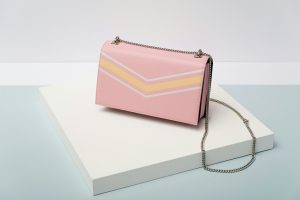Advanced Biomimetic Fashion Interfaces Inspired by Ecological Systems
Fashion and technology have always had a symbiotic relationship, with advancements in one field often influencing and revolutionizing the other. In recent years, this relationship has become even more evident with the rise of biomimicry in fashion design, a concept that takes inspiration from nature to create innovative and sustainable fashion solutions. One aspect of this growing trend is the development of advanced biomimetic fashion interfaces inspired by ecological systems. These interfaces, which combine fashion and technology, have the potential to transform the way we interact with clothing and the natural environment. In this article, we will delve into the fascinating world of biomimetic fashion interfaces and explore the advancements and possibilities they hold for the future of fashion. 
Understanding Biomimetic Fashion Interfaces
Biomimicry, also known as biomimetics, is the practice of imitating nature’s designs and processes to solve human problems. It is a concept that has been embraced by various industries, including fashion, with the aim of finding sustainable solutions to design challenges. Biomimetic fashion interfaces take this concept a step further by merging it with technology, creating fashion that goes beyond just aesthetics and functionality.
These interfaces are inspired by ecological systems, which refer to the interaction of living organisms with each other and their environment. By mimicking the behavior and functions of living organisms, designers are able to create clothing that not only looks visually appealing but also serves a purpose beyond just covering the body.
Examples of Advanced Biomimetic Fashion Interfaces
One of the most prominent examples of advanced biomimetic fashion interfaces is the collaboration between fashion brand, Puma, and MIT’s Media Lab. Together, they created the “Breathing Shoe” which uses bio-engineering technology to mimic the breathing ability of human skin. The shoe’s upper material changes its porosity in response to temperature and humidity, allowing it to adapt to the wearer’s foot and provide ventilation when needed.
Another notable example is ‘digital skin’, developed by Lara Grant and Kevin Self, which is inspired by the skin of a jellyfish. The fabric is light-sensitive and can change color and appearance when exposed to different lighting conditions. This technology has the potential to revolutionize the way we think about camouflage clothing and provide new options for customization.
Beyond just aesthetics, biomimetic fashion interfaces also have functional benefits. For instance, German designer, Anke Domaske, uses a process that mimics spider silk spinning to create a biodegradable fabric made from milk. This breathable and antibacterial fabric is not only sustainable but also has therapeutic properties for the skin.
The Advancements and Possibilities
The use of biomimetic fashion interfaces is still in its early stages, but the possibilities for future advancements are endless. By taking inspiration from nature, designers can create innovative solutions to some of the biggest challenges facing the fashion industry, such as waste, pollution, and sustainability.
One area that could greatly benefit from the integration of biomimetic fashion interfaces is active and performance wear. By mimicking the dynamic and adaptive qualities of plant and animal systems, clothing could be designed to better respond to the body’s movements and physiology, providing increased comfort and efficiency for athletes and fitness enthusiasts.
In addition, biomimetic fashion interfaces have a significant impact on the environment. By creating clothing that is inspired by nature and integrates sustainable materials and production processes, we can reduce the ecological footprint of the fashion industry. This also opens up possibilities for developing clothing that has a positive impact on the environment, such as using biodegradable materials that can break down into organic matter.
The Future of Fashion
As biomimetic fashion interfaces continue to evolve and become more integrated into the fashion industry, we can expect to see a shift towards more sustainable and functional designs. By looking to nature for inspiration and embracing technological advancements, designers have the opportunity to create fashion that is not only visually appealing but also has a positive impact on society and the environment.
Overall, the development of advanced biomimetic fashion interfaces is an exciting prospect that has the potential to change the landscape of the fashion industry for the better. With its focus on sustainability and functionality, this emerging trend is set to bring significant advancements and create a more conscious and responsible approach to fashion design.











